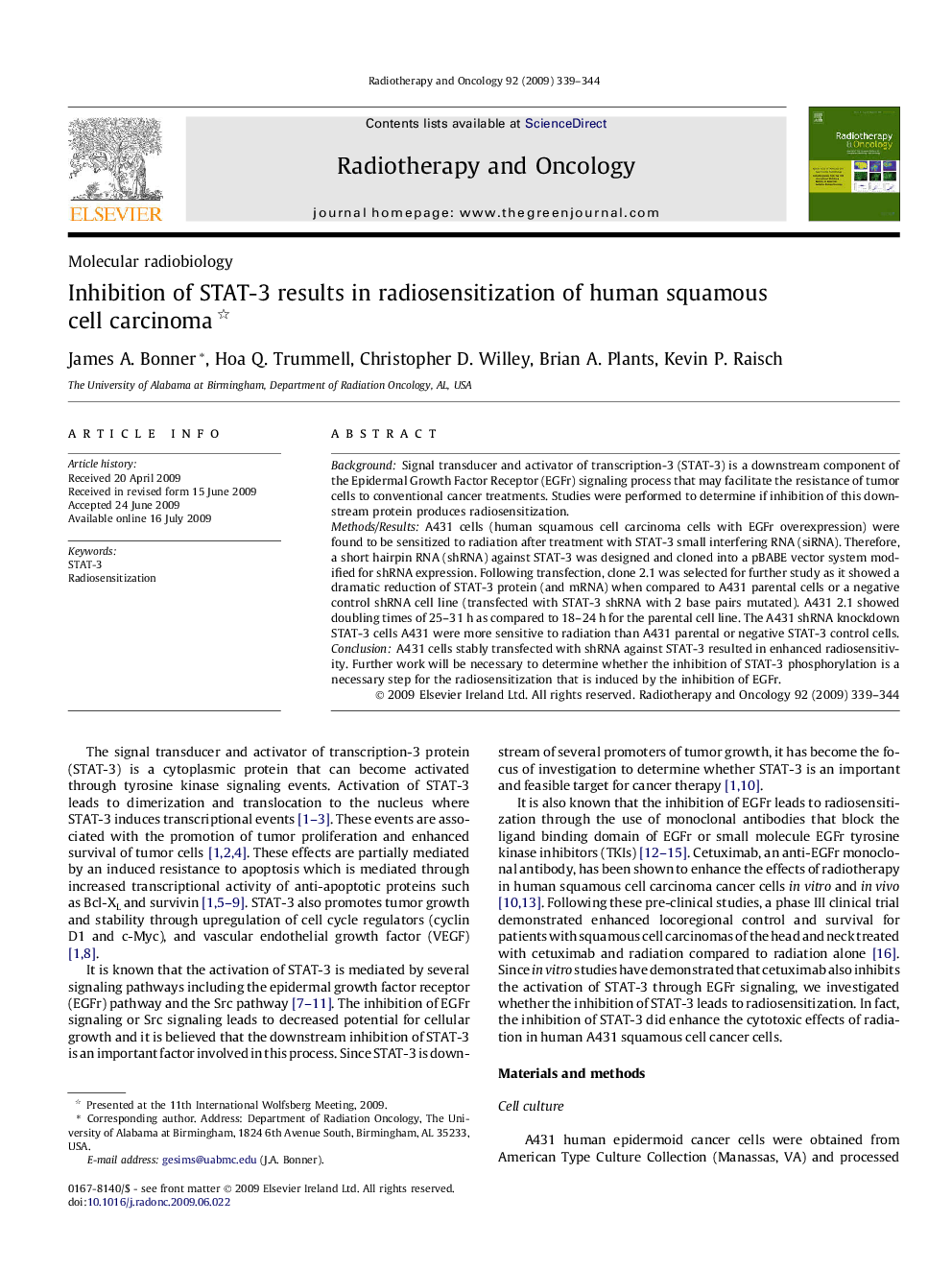| Article ID | Journal | Published Year | Pages | File Type |
|---|---|---|---|---|
| 2158905 | Radiotherapy and Oncology | 2009 | 6 Pages |
BackgroundSignal transducer and activator of transcription-3 (STAT-3) is a downstream component of the Epidermal Growth Factor Receptor (EGFr) signaling process that may facilitate the resistance of tumor cells to conventional cancer treatments. Studies were performed to determine if inhibition of this downstream protein produces radiosensitization.Methods/ResultsA431 cells (human squamous cell carcinoma cells with EGFr overexpression) were found to be sensitized to radiation after treatment with STAT-3 small interfering RNA (siRNA). Therefore, a short hairpin RNA (shRNA) against STAT-3 was designed and cloned into a pBABE vector system modified for shRNA expression. Following transfection, clone 2.1 was selected for further study as it showed a dramatic reduction of STAT-3 protein (and mRNA) when compared to A431 parental cells or a negative control shRNA cell line (transfected with STAT-3 shRNA with 2 base pairs mutated). A431 2.1 showed doubling times of 25–31 h as compared to 18–24 h for the parental cell line. The A431 shRNA knockdown STAT-3 cells A431 were more sensitive to radiation than A431 parental or negative STAT-3 control cells.ConclusionA431 cells stably transfected with shRNA against STAT-3 resulted in enhanced radiosensitivity. Further work will be necessary to determine whether the inhibition of STAT-3 phosphorylation is a necessary step for the radiosensitization that is induced by the inhibition of EGFr.
